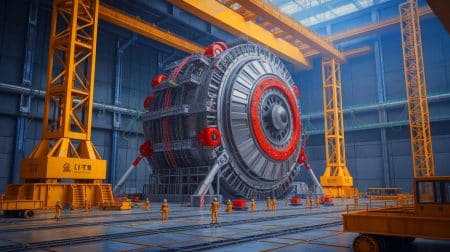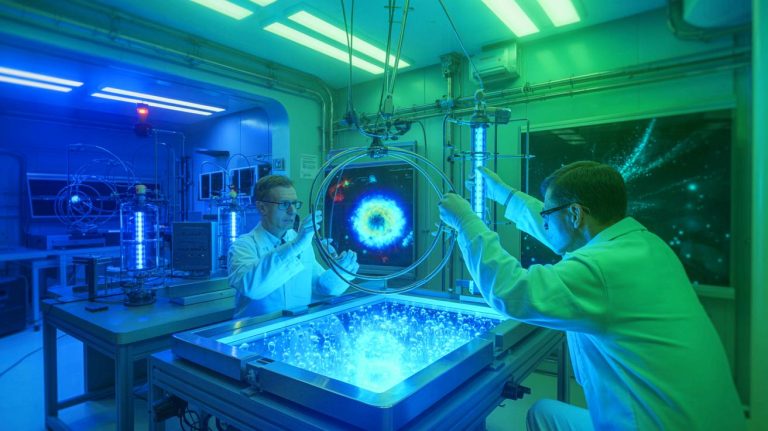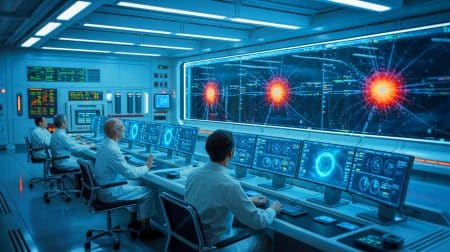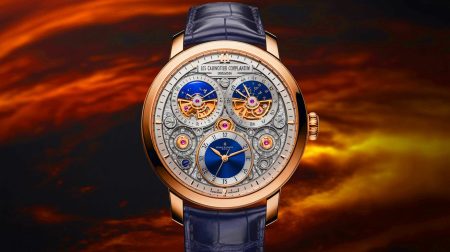| IN A NUTSHELL |
|
In a groundbreaking experiment, scientists in Europe have achieved the once-unthinkable: they have simulated a process that could potentially unravel the universe. By recreating the hypothetical event known as false vacuum decay in a laboratory setting, researchers have managed to offer the first tangible glimpse into one of the most catastrophic scenarios predicted by modern theoretical physics. This experiment, using ultracold atoms, provides an unprecedented opportunity to explore the fundamental nature of our universe and the potential end of all things. What follows is a detailed look into this astonishing scientific achievement and its implications.
A Dangerous Idea From Quantum Field Theory
The concept of false vacuum decay is grounded in quantum field theory, suggesting that our universe may not be in its lowest energy state. Instead, it might reside in a metastable state, referred to as a “false vacuum.” While this state appears stable, a transition to a true vacuum would mean a shift to a more stable, lower-energy configuration. Such a shift could initiate a violent transformation of space itself.
This transition would begin with the creation of a true vacuum bubble, expanding at nearly the speed of light, fundamentally altering the laws of physics. The study, “False vacuum decay via bubble formation in ferromagnetic superfluids,” published in Nature Physics, led by G. Ferrari, describes how the decay of the false vacuum into the ground state occurs through quantum vacuum fluctuations or thermal fluctuations. Until recently, this idea remained purely theoretical due to the extreme energy scales involved in cosmology, but now, science has taken a giant leap forward.
Simulating Vacuum Decay With Ultracold Atoms
Researchers in Italy and the United Kingdom have successfully conducted an experiment to simulate vacuum decay using an optically trapped gas of sodium-23 (Na-23) atoms, cooled to near absolute zero. This process formed a ferromagnetic superfluid, enabling the team to mimic the physics of vacuum decay on a laboratory scale. The crucial aspect was creating a double-well energy landscape, allowing the system to reach a metastable state akin to a false vacuum.
By employing microwave radiation, the system was driven out of equilibrium, inducing transitions between two atomic states, labeled as “up” (|↑⟩) and “down” (|↓⟩). Through careful control of the detuning parameter (δ) and the coherent coupling strength (Ωₙ), the researchers facilitated the spontaneous formation of “bubbles” in the atomic cloud. These bubbles serve as an experimental analogue to true vacuum bubbles in the early universe, where the system tunnels through an energy barrier into a more stable state.
Tracking Bubbles in the Lab
To observe the simulated vacuum decay, scientists repeatedly imaged the spatial magnetization of the atomic cloud over time. They discovered that as the system remained in a metastable state, a macroscopic region in the central part of the system flipped to |↓⟩, generating a bubble. The probability of this bubble’s appearance increased over time, showing an exponential dependence on the system’s parameters, in line with theoretical predictions.
Researchers measured the magnetization profile Z(x), defined as the difference between the densities of the two spin states normalized by their sum. This allowed the tracking of how the false vacuum transitioned to the true vacuum over time. By introducing the metric Ft to quantify bubble growth, they found it dropped exponentially as bubbles appeared, aligning with simulations based on the Gross–Pitaevskii equation. This experiment affirms the theoretical groundwork laid by the instanton model, offering a new window into cosmic phenomena.
A Close Match Between Theory and Experiment
The experiment demonstrates a close match between theoretical predictions and laboratory findings, supporting the instanton model used to describe vacuum tunneling events. According to this model, the time for a bubble to form is determined by the energy barrier separating the two states and a parameter β representing the system’s effective temperature.
The experimental and simulation results revealed that bubble formation follows an exponential scaling law dependent on proximity to the critical detuning value δc. Notably, the results mirrored experimental data when thermal noise was incorporated to mimic real-world conditions. By adjusting experimental parameters, researchers could precisely control the timescale of bubble formation, ranging from milliseconds to hundreds of milliseconds, thanks to their ability to maintain magnetic field stability better than tens of microgauss. This precision opens new avenues in understanding the dynamics of cosmic events.
This research marks a monumental advance in bridging the gap between low-energy experiments and high-energy theoretical physics. As scientists continue to explore the intricacies of vacuum decay using cold-atom systems, they pave the way for deeper insights into metastability, phase transitions, and early-universe dynamics. What new frontiers will these experiments open, and how will they reshape our understanding of the universe’s ultimate fate?
Did you like it? 4.6/5 (28)









This is mind-blowing! Can we really simulate the end of the universe in a lab? 🤯
Great article, but how does this experiment affect our daily lives? 🤔
Wait, should I be worried about the universe ending now? 😅
Could this be the key to unlocking new energy sources? 🤞
I’m skeptical. How can they be sure the lab results match cosmic phenomena?
So, we’re basically playing with cosmic fire, right? 🔥